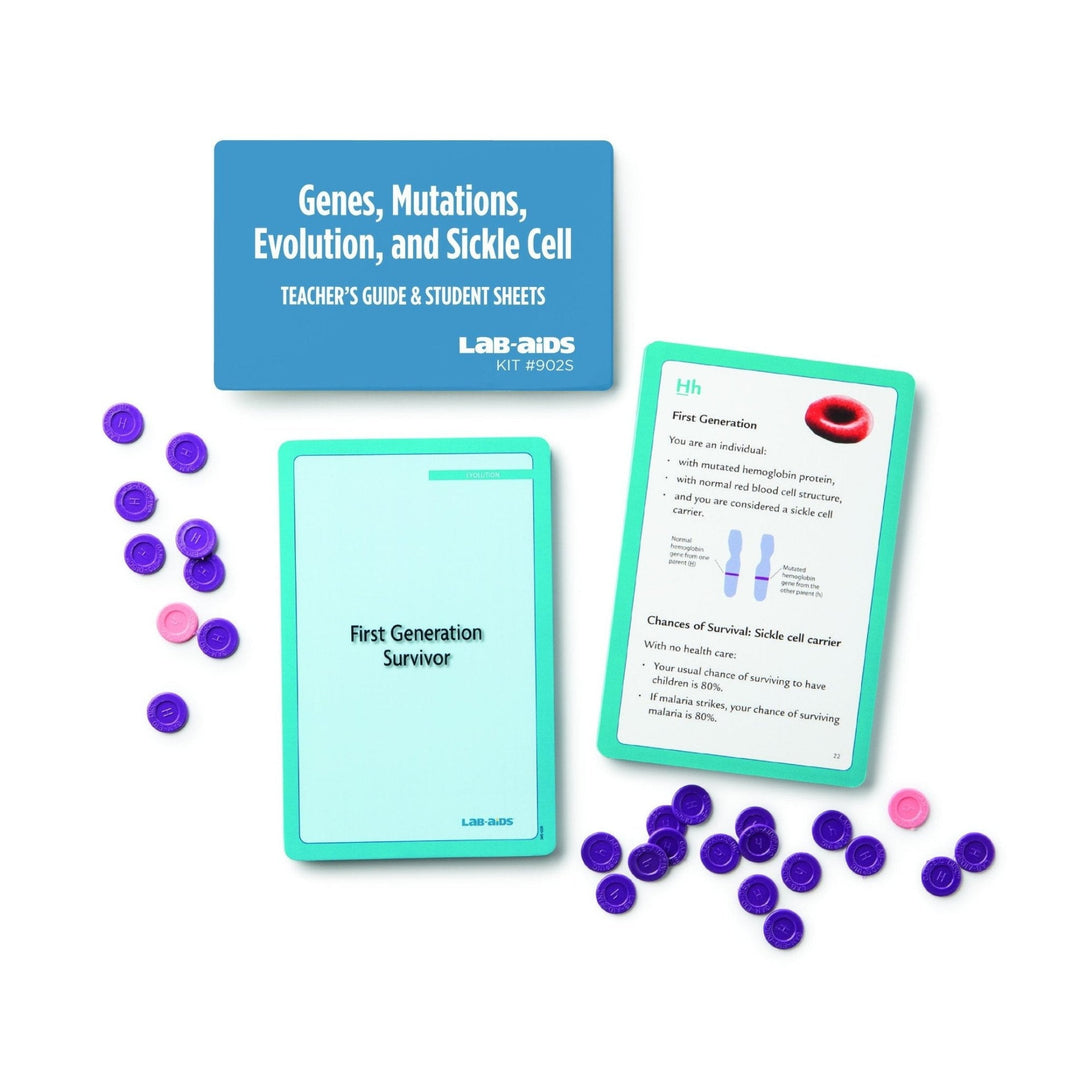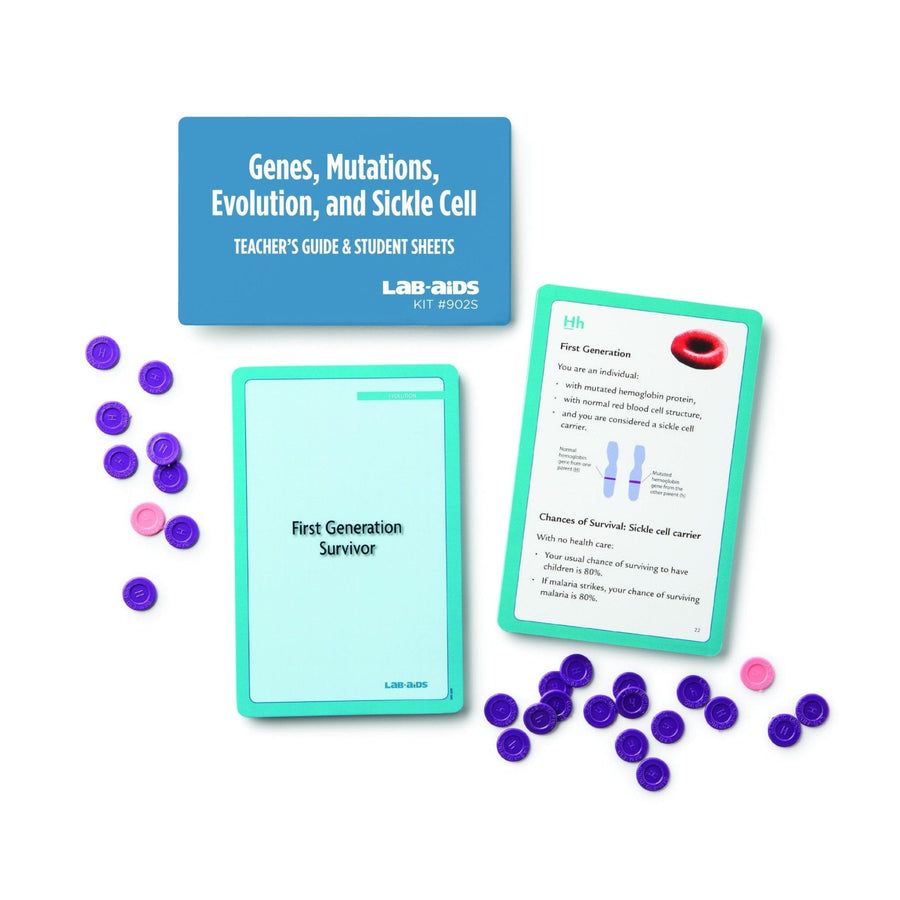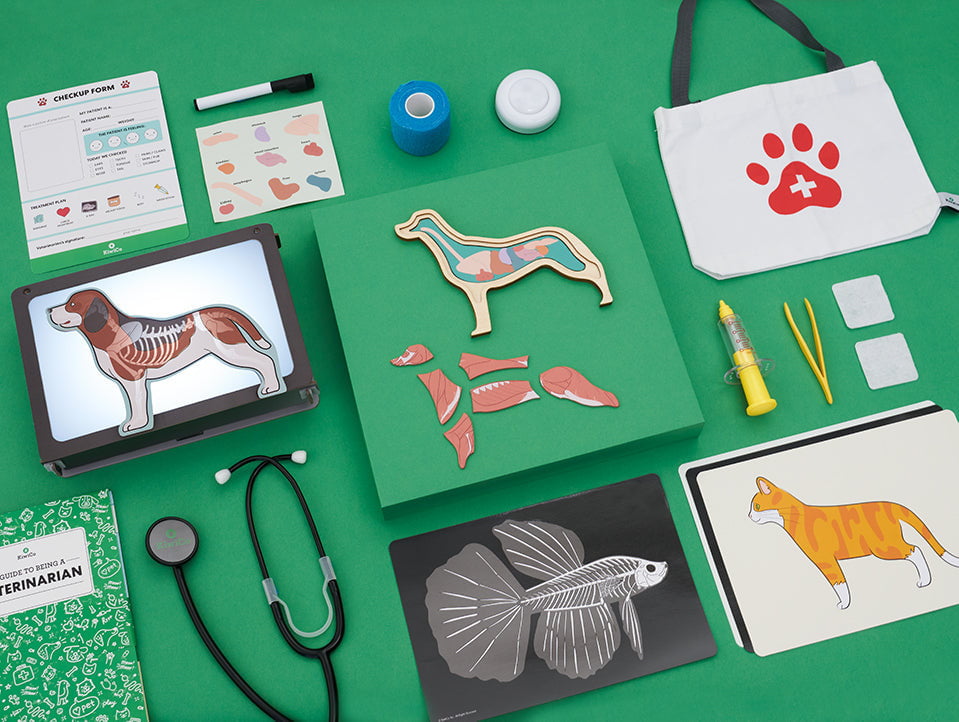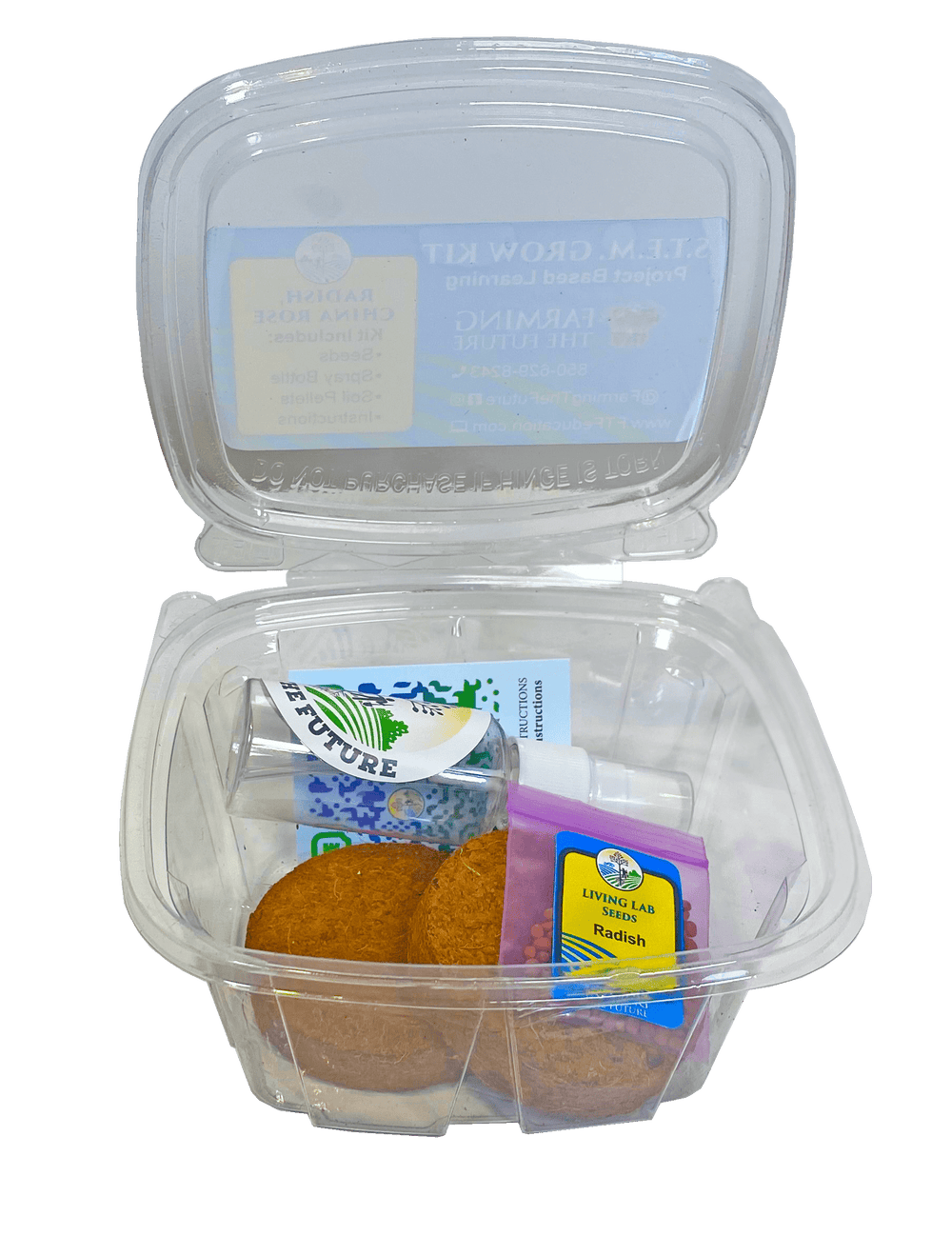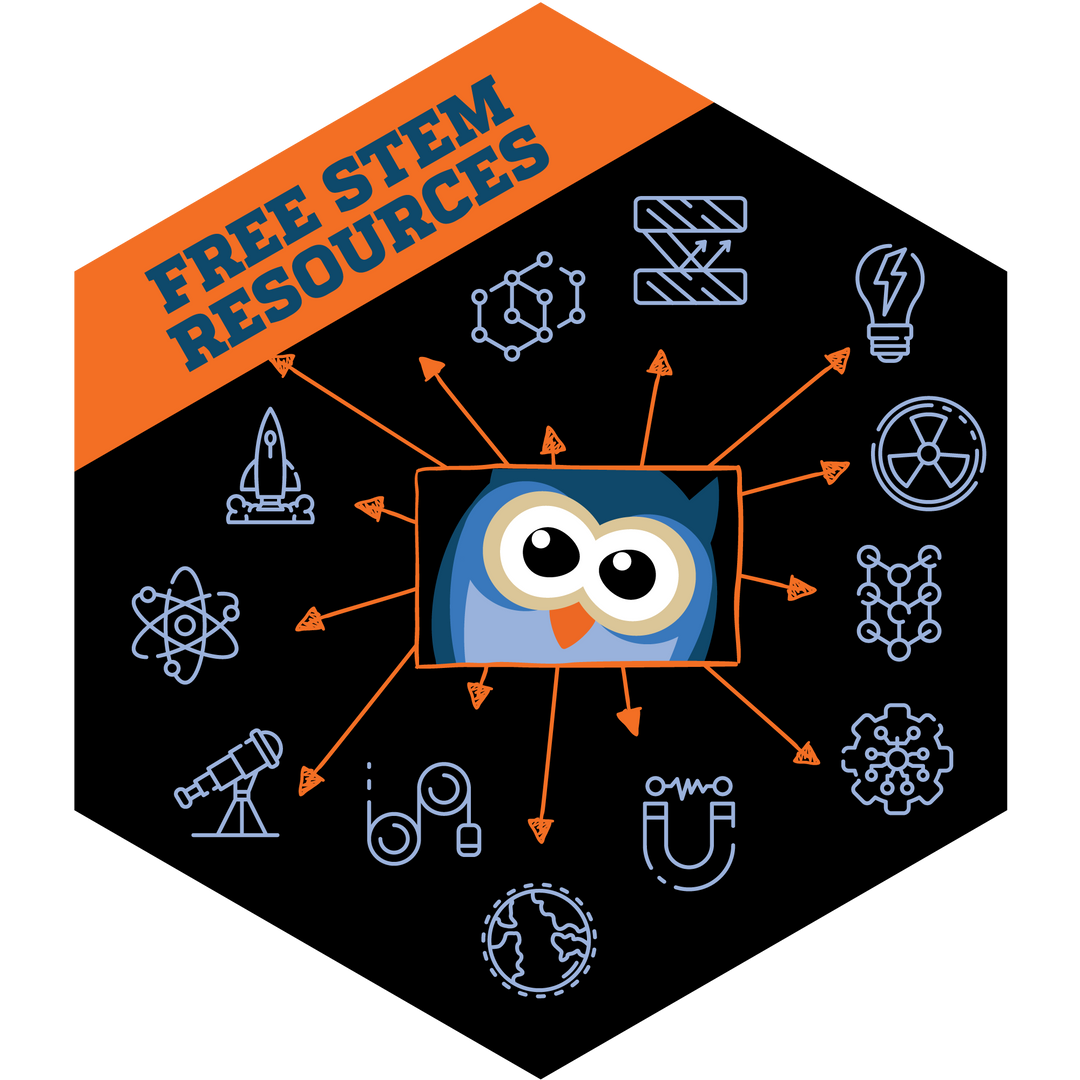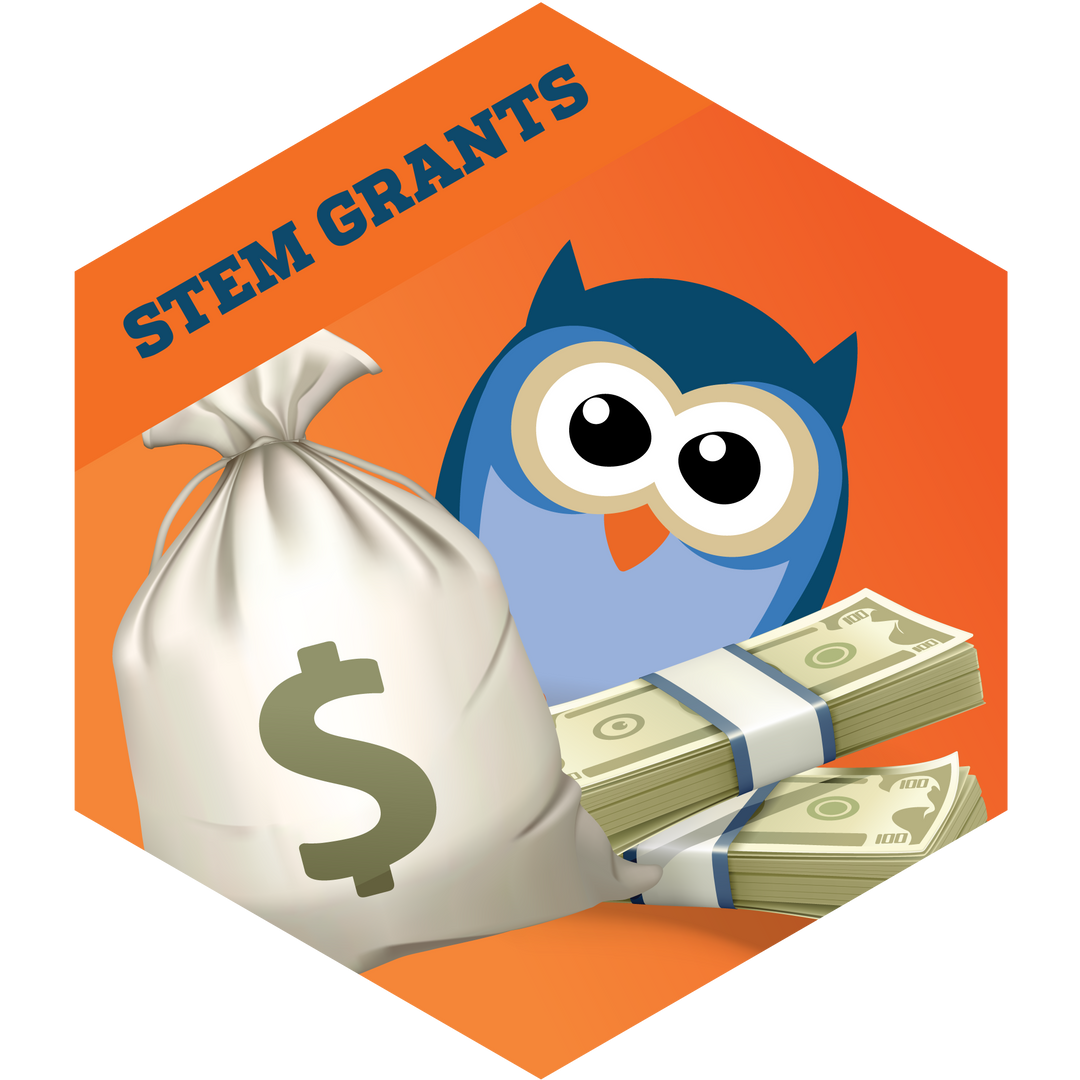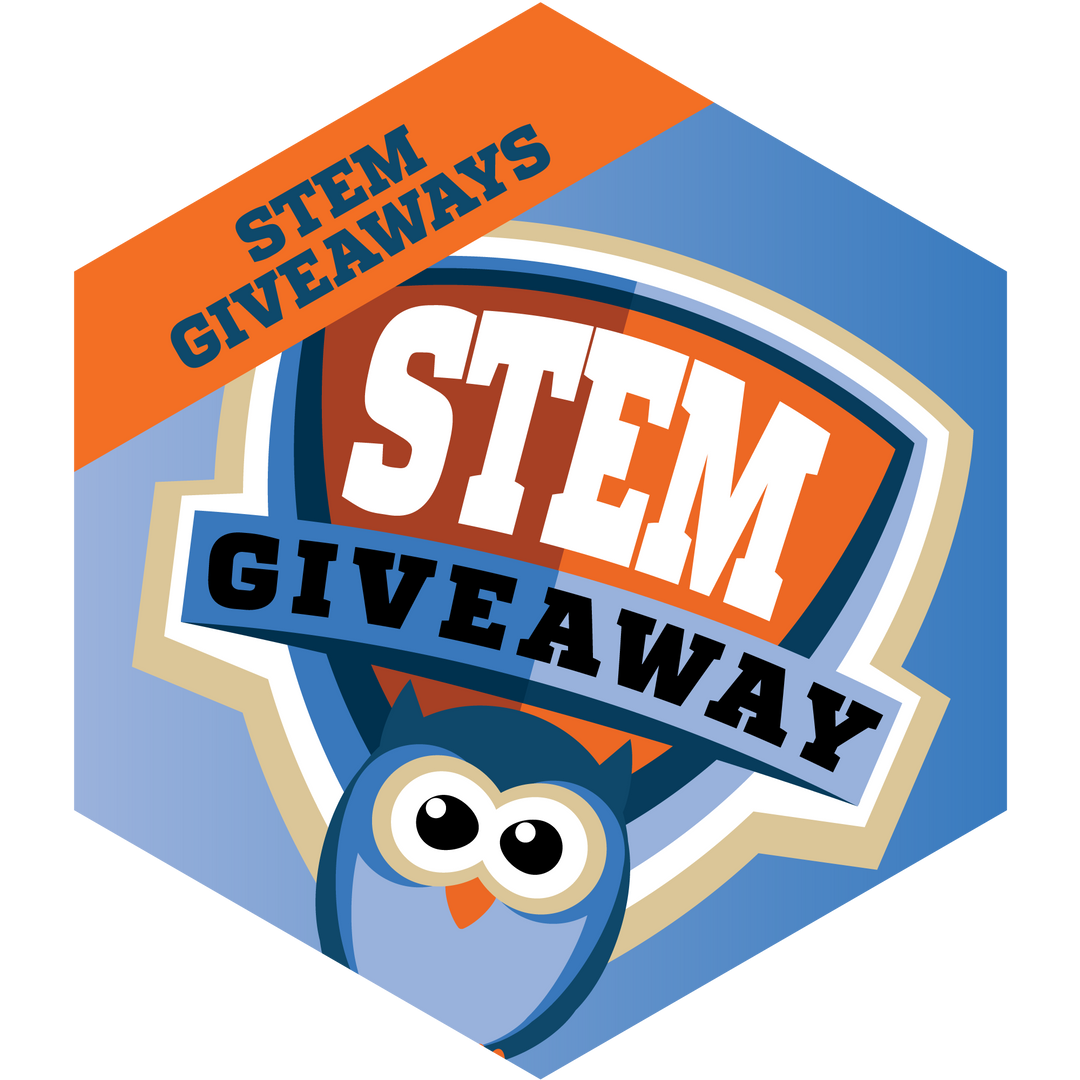Lab-Aids: Genes, Mutations, Evolution, & Sickle Cell (Developed by SEPUP)
- Grades: 6+
- Number of Students: 32
In Part 1, students follow the inheritance of a hemoglobin mutation through two generations. Students identify patterns in their data and investigate the cause-and-effect relationship between environmental conditions and the frequency of a trait in a population. Based on their data collection and analysis, students construct explanations for how changes to a gene influence an organism’s ability to survive and reproduce. Specifically, students use the example of hemoglobin to explain how structural changes to genes (i.e., mutations), lead to changes in protein structure and function, and how this can lead to changes in the function of red blood cells which, in turn, can affect survival of individuals with the mutation.
In Part 2, students use a computer simulation to extend their investigation of the hemoglobin mutation. Initially, the simulation extends their data from the previous activity through 30 generations. Then students are able to adjust the environmental conditions to see how access to resources and the prevalence of malaria influence the distribution of the hemoglobin gene over time.
Accommodates unlimited classes, each with 8 groups of 4 students.
Product Includes:
32 First Generation profile cards
32 First Generation Survivor profile cards
34 Hemoglobin plastic disks (16 HH typical, 16 Hh sickle cell carrier, and 2 hh sickle cell anemic)
32 Student Guides
1 Teacher's Guide
Classroom Planning:
Number of Students: maximum of 32 per class
Number of Groups: maximum of 8 groups of 4 students per class
Number of Classes: unlimited (no consumable materials)
Scientific Concepts:
-
NGSS Performance Expectations
MS-LS3-1: Develop and use a model to describe why structural changes to genes (mutations) located on chromosomes may affect proteins and may result in harmful, beneficial, or neutral effects to the structure and function of the organism.
MS-LS4-6: Use mathematical representations to support explanations of how natural selection may lead to increases and decreases to specific traits in populations over time.
MS-LS4-4: Construct an explanation based on evidence that describes how genetic variations of traits in a population increase some individuals’ probability of surviving and reproducing in a specific environment.
-
NGSS Disciplinary Core Ideas
MS-LS3.A Inheritance of Traits: Genes are located in the chromosomes of cells, with each chromosome pair containing two variants of each of many distinct genes. Each distinct gene chiefly controls the production of specific proteins, which in turn affects the traits of the individual. Changes (mutations) to genes can result in changes to proteins, which can affect the structures and functions of the organism and thereby change traits.
MS-LS3.B Variation of Traits: In addition to variations that arise from sexual reproduction, genetic information can be altered because of mutations. Though rare, mutations may result in changes to the structure and function of proteins. Some changes are beneficial, others harmful, and some neutral to the organism.
MS-LS4.C Adaptation: Adaptation by natural selection acting over generations is one important process by which species change over time in response to changes in environmental conditions. Traits that support successful survival and reproduction in the new environment become more common; those that do not become less common. Thus, the distribution of traits in a population changes.
MS-LS4.B Natural Selection: Natural selection leads to the predominance of certain traits in a population, and the suppression of others.
-
NGSS Science and Engineering Practices
Developing and Using Models: Develop and use a model to describe phenomena.
Using Mathematical and Computational Thinking: Use mathematical representations to support scientific conclusions and design solutions.
Constructing Explanations and Designing Solutions: Construct an explanation that includes qualitative or quantitative relationships between variables that describe phenomena.
-
NGSS Crosscutting Concepts
Structure and Function: Complex and microscopic structures and systems can be visualized, modeled, and used to describe how their function depends on the shapes, composition, and relationships among its parts, therefore complex natural structures/systems can be analyzed to determine how they function.
Cause and Effect: Phenomena may have more than one cause, and some cause and effect relationships in systems can only be described using probability.
Patterns: Graphs, charts, and images can be used to identify patterns in data.
-
Common Core State Standards—Mathematics
6.RP.A.1: Understand the concept of a ratio and use ratio language to describe a ratio relationship between two quantities.
6.SP.B.5: Summarize numerical data sets in relation to their context.
-
Common Core State Standards—ELA/Literacy
SL.8.1: Engage effectively in a range of collaborative discussions (one-on-one, in groups, teacher-led) with diverse partners on grade 6 topics, texts, and issues, building on others’ ideas and expressing their own clearly.
SL.8.4: Present claims and findings, emphasizing salient points in a focused coherent manner with relevant evidence, sound valid reasoning, and well-chosen details; use appropriate eye contact, adequate volume, and clear pronunciation.
